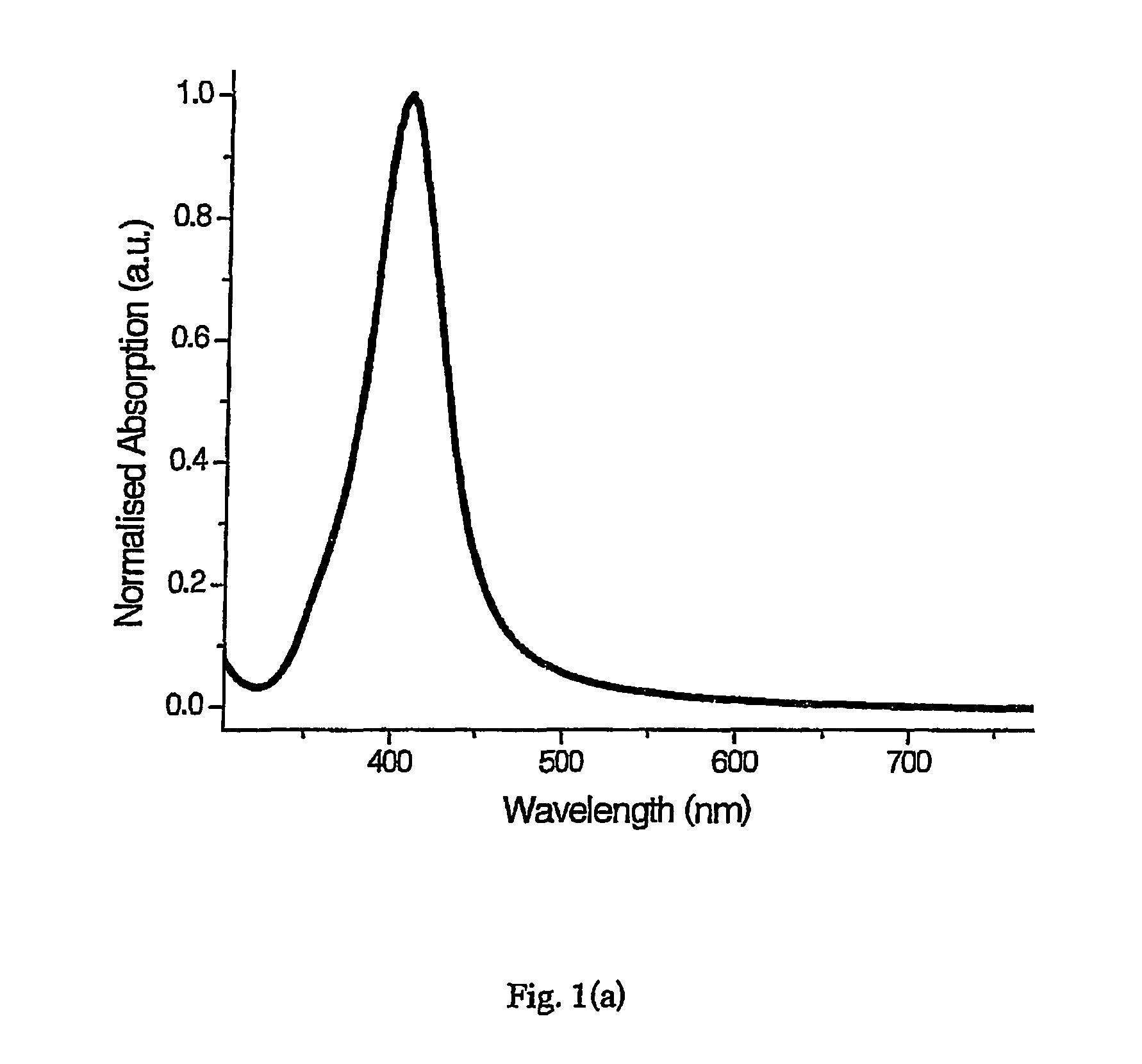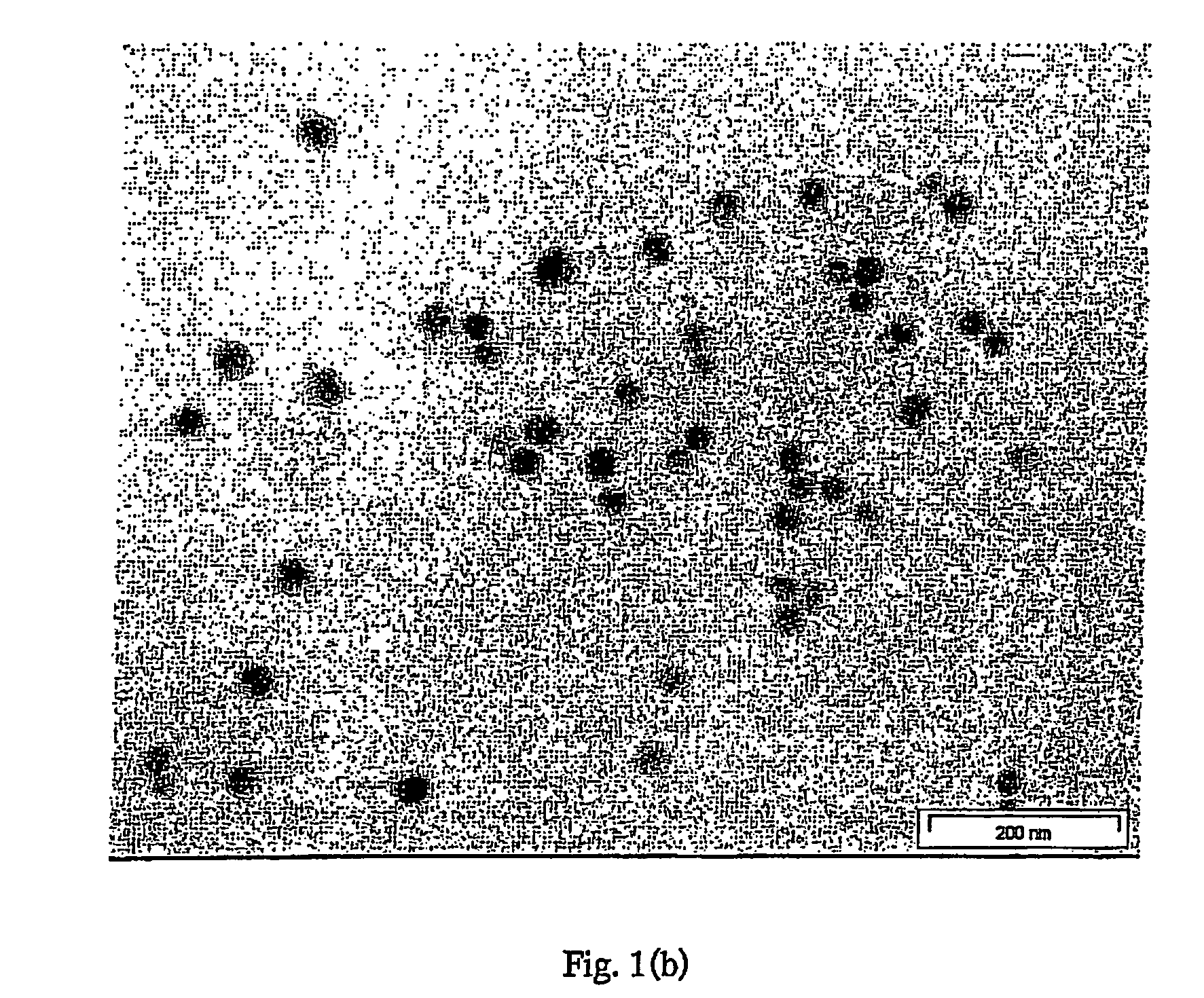Sensors for detecting an analyte using silver nanoparticles
a technology of silver nanoparticles and sensors, applied in colloidal chemistry, biomass after-treatment, instruments, etc., can solve the problems of difficult control of nanoparticle morphology, time-consuming and laborious, and multi-step process typically required
- Summary
- Abstract
- Description
- Claims
- Application Information
AI Technical Summary
Benefits of technology
Problems solved by technology
Method used
Image
Examples
example 1
Preparation of Silver Seeds
[0190]A 20 ml solution with final concentration of 2.5×10−4 M AgNO3 and 2.5×10−4 M trisodium citrate in water was prepared. NaBH4 (0.01 M, 0.6 ml) was added with vigorous stirring. A colour change from colourless to yellow was observed, indicating formation of silver seed nanoparticles.
Example 2(i)
Preparation of Silver Nanoparticles
[0191]Poly(vinyl alcohol) (PVA)-silver nanoparticles were typically prepared as follows: aqueous AgNO3 (0.01 M, 0.25 ml) was added to aqueous PVA of molecular weight (mol. wt.) 89 kD-98 kD (10 ml, 1% w / v). Silver seeds (2.5×10−4 M, 0.1 ml) and ascorbic acid (0.1 M, 0.05 ml) were then added simultaneously with stirring.
example a
Preparation of Red Silver Nanoparticles
[0192]Aqueous PVA (mol. wt. 89 kD-98 kD, 1% w / v, 10 ml) and aqueous AgNO3 (0.01 M, 0.25 ml) were added to a reaction vessel. The mixture was heated to 40° C. Silver seed nanoparticles prepared according to example 1 (0.1 ml) and ascorbic acid (0.1 M, 0.05 ml) were added simultaneously—a colour change from colourless to red was observed. The silver nanoparticles were incubated at 40° C. for one hour, then transferred to a sample tube and stored in the dark at 4° C.
example b
Preparation of Purple Silver Nanoparticles
[0193]Aqueous PVA (mol. wt. 89 kD-98 kD, 2.5% w / v, 10 ml) and aqueous AgNO3 (0.01 M, 0.25 ml) were added to a reaction vessel. The mixture was heated to 40° C. Silver seed nanoparticles prepared according to example 1 (0.2 ml) and ascorbic acid (0.1 M, 0.05 ml) were added simultaneously—a colour change from colourless to purple was observed. The silver nanoparticles were incubated at 40° C. for one hour, then transferred to a sample tube and stored in the dark at 4° C.
PUM
| Property | Measurement | Unit |
|---|---|---|
| molecular weight | aaaaa | aaaaa |
| molecular weight | aaaaa | aaaaa |
| temperature | aaaaa | aaaaa |
Abstract
Description
Claims
Application Information
 Login to View More
Login to View More - R&D
- Intellectual Property
- Life Sciences
- Materials
- Tech Scout
- Unparalleled Data Quality
- Higher Quality Content
- 60% Fewer Hallucinations
Browse by: Latest US Patents, China's latest patents, Technical Efficacy Thesaurus, Application Domain, Technology Topic, Popular Technical Reports.
© 2025 PatSnap. All rights reserved.Legal|Privacy policy|Modern Slavery Act Transparency Statement|Sitemap|About US| Contact US: help@patsnap.com



